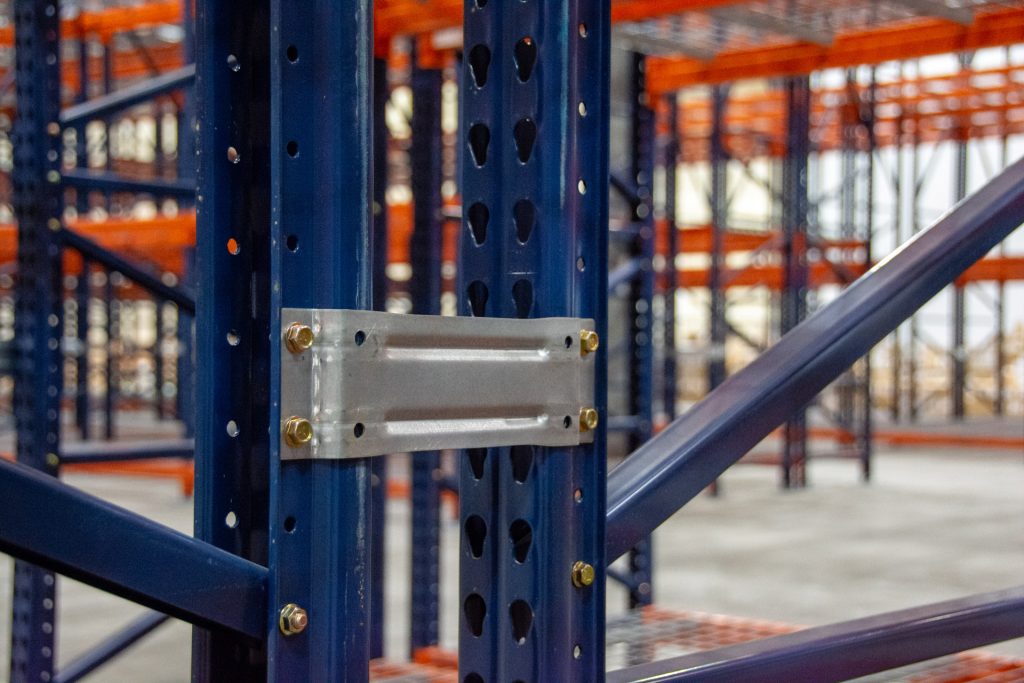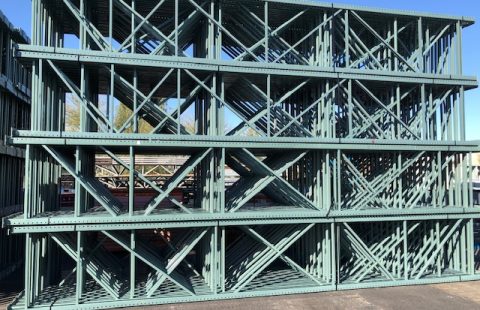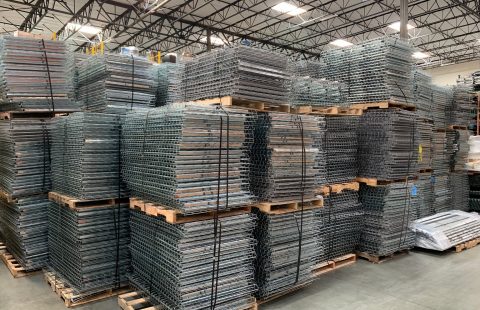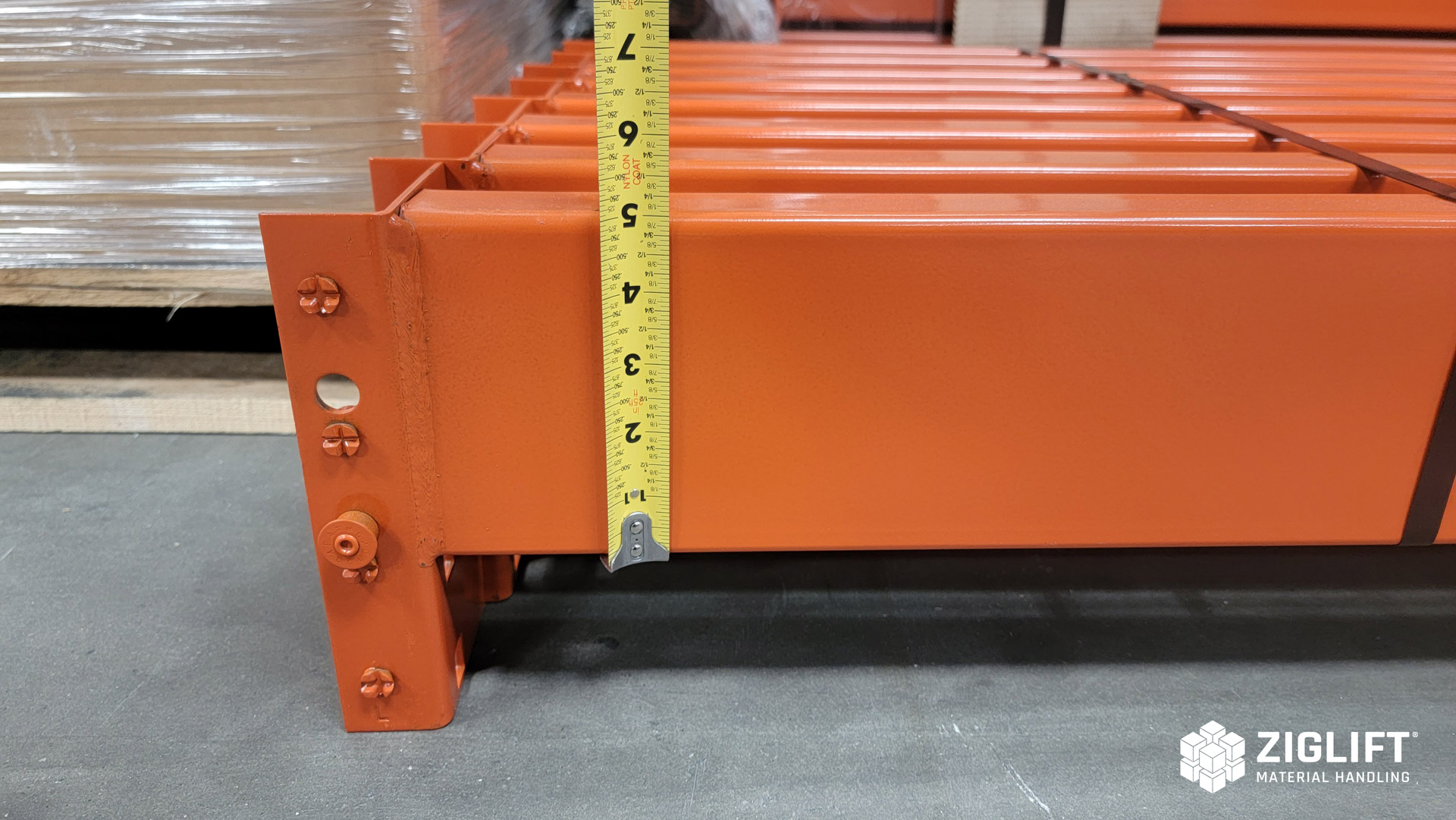
How to Measure Pallet Racking Guide
We created this guide on how to measure pallet racking to help the average warehouse operator to understand what to measure and how to identify the parts of a system.
Uprights
Uprights are the primary, vertical components of any selective racking system.
Some may also call them frames, but ‘upright’ is the standard industry term. Uprights carry all the weight of your product to the floor. Their anchoring to the floor ensures stability. The height is key to maximizing your storage volume while assuring you are not oversized for you ceilings.
The depth of the upright (front to back) is important because it affects how pallets will fit and be supported. An upright has two posts (or columns) connected by cross braces. Post dimensions are important because they relate to the overall capacity of an upright.
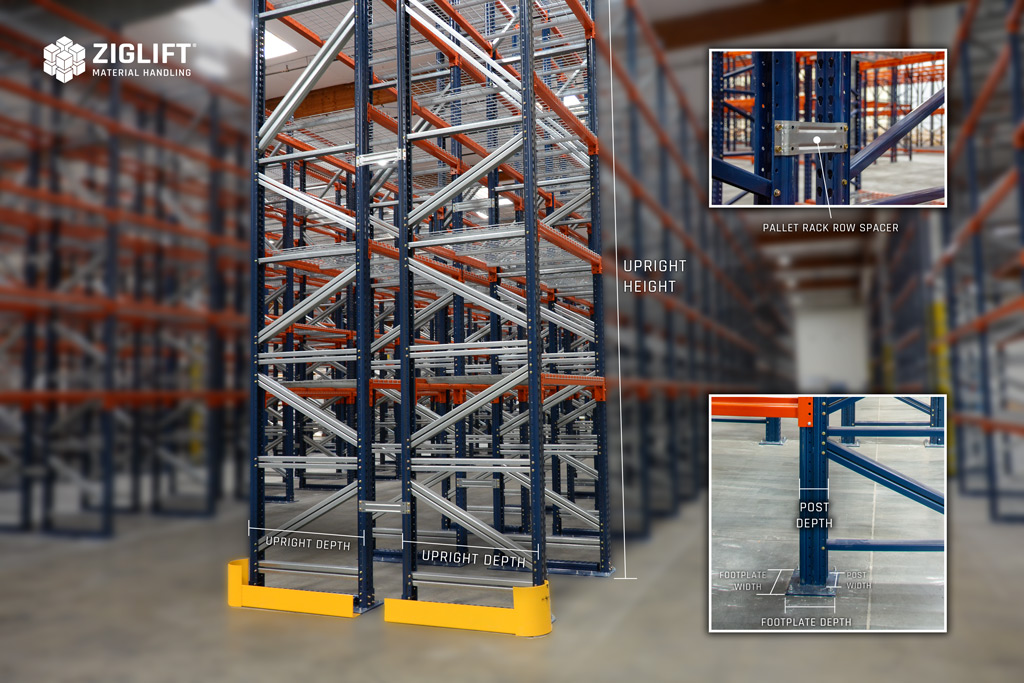
Measuring Uprights
An example of a typical upright measurement:
42” x 120”, 3” x 1-5/8”
OR depth x height, post width x post depth
- Depth – measure the distance from outside of one post face to the outside of the other post face.
- Height – measure the distance from the bottom of the foot plate to the top of the post.
- Width – measure the width across the outside face of the upright post.
- Post Depth – measure from the outside face of the upright post to the inside edge of that same post.
Beams
Beams primarily resists loads applied laterally to the beam’s axis (designed to carry primarily axial load would be an upright). Its mode of deflection is primarily by bending. The Beams are characterized by their manner of support, profile (shape of cross-section), equilibrium conditions, length, and their material.
Measuring Pallet Racking Beams
Typically a beam specs will look like this:
96” x 5” step beam, 4,500 lb capacity / pair
OR beam length x beam face height beam section type, beam capacity / pair.
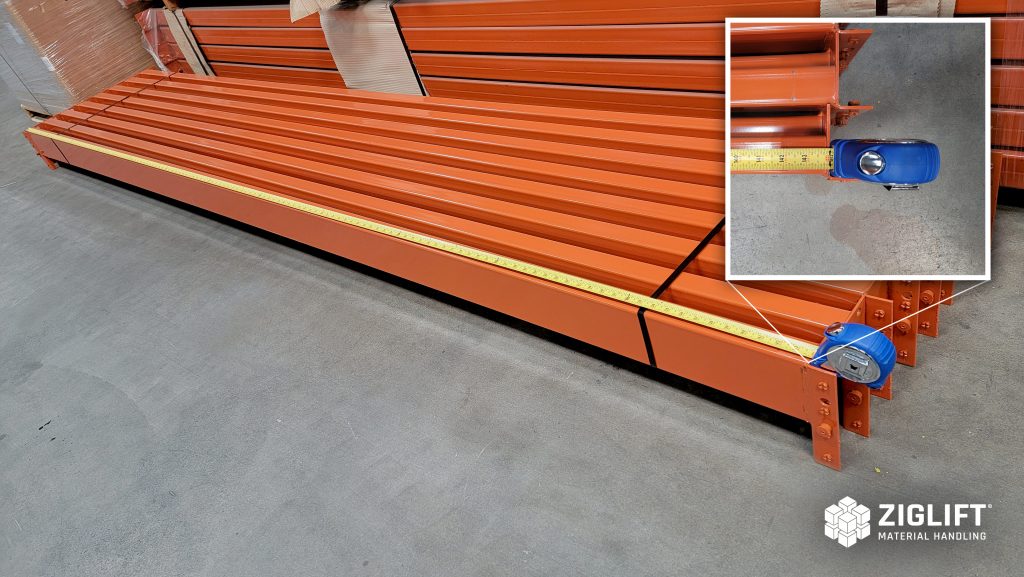
- Length – find the distance from the inside face of the flange to the inside face of the other flange (SEE ABOVE IMAGE).
The best measurement is the same as the distance between uprights when the beam is installed.
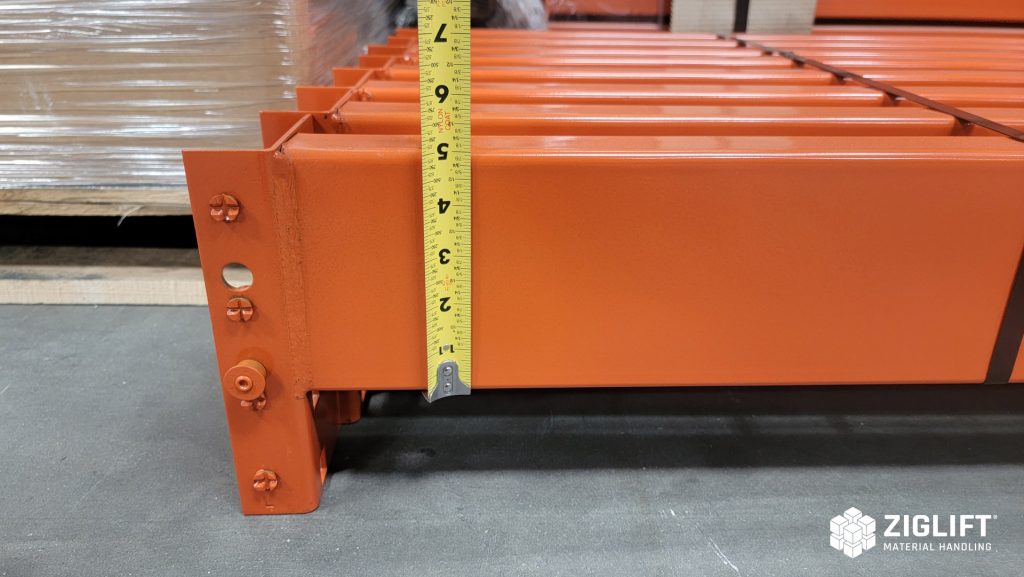
- Face Height – measure the height of the beam member itself on the outside face, not including the flanges
Wire Mesh Decks
Wire decks (decks for short) mount onto beams and provide more support for product. Measurements are associated with the uprights they’re well matched with. A wire deck is produced from wire mesh welded to channels.
Measuring Decks
An example of a wire deck specs:
42” x 46”, 3 channel, waterfall
OR depth of upright that deck is compatible with x width of deck in direction of beam, number and type of channels, and type of front and back edge.
- Depth – it is the same as the depth of the upright the deck is being used with. Or, for waterfall decks (most common), measure the overall depth, in the direction of the channels, and subtract 1”
- Width – measure the actual width of deck, by the direction of the beam which the deck sits on.
- Channel specifications – count the channels
- Edge style – See images below:
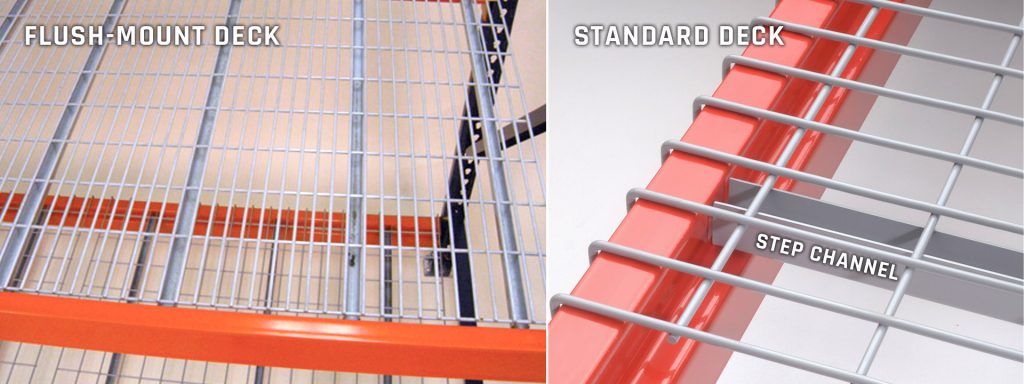
Pallet Supports
Pallet supports are an alternative to wire decks that span two beams, supporting a pallet above.
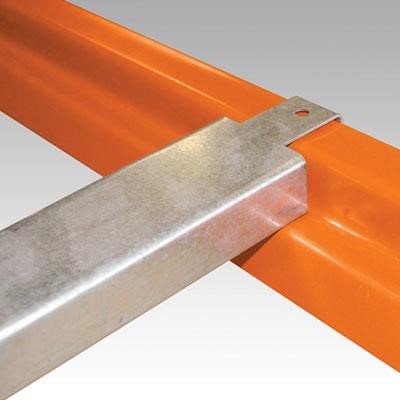
Measuring Pallet Supports
- Actual length of the channel – measure the support that sits between beams or the roll formed section.
- Type of pallet support
Row Spacers
Row spacers connect back-to-back rows of racking by attaching to an upright on either side. The space create between uprights determines the row spacer measurements that should be noted.
Measuring Row Spacers
An example description of specs: 12”, 4-bolt
OR length, total number of bolts or style of racking.
- Length – measure the length of roll formed portion of row spacer or the space between uprights.
- Bolt holes – how many are machined into the row spacer.
